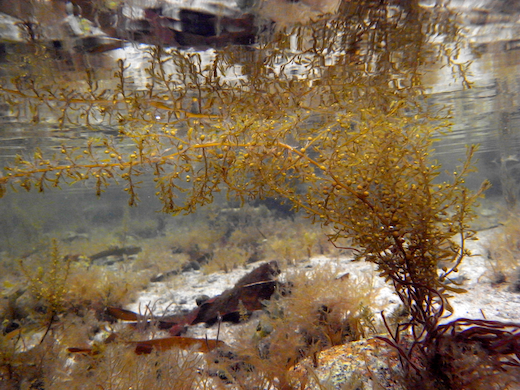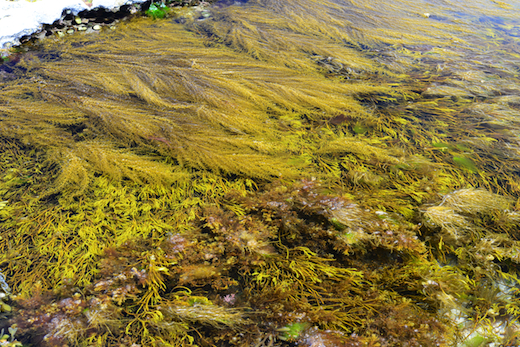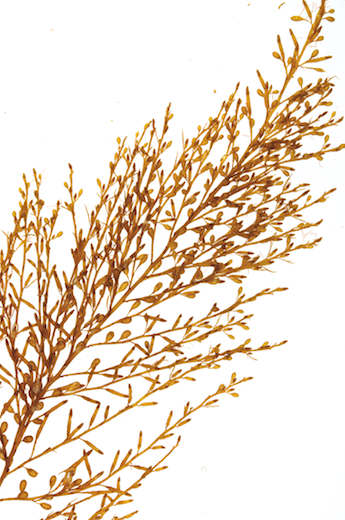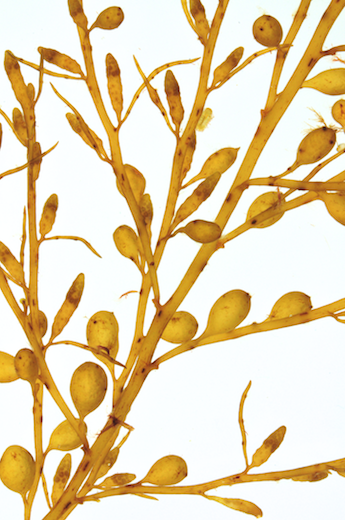Sargassum muticum (Yendo) Fensholt

Description: Thallus bushy, elongated, yellowish-tawny to dark brown, generally to 4 m long (plants to 16 m have been reported from Brittany, but this is exceptions); tough, cylindrical, repeatedly alternately pinnately branched to the third or fourth order (below, left); whorls of distinctly flattened sculpted leaves at the base (resembling the leaves of Holly); with characteristic rounded-elliptical air bladders (above and below, right) formed terminally. Reproductive receptacles (below, right) formed in the axils of spiny leaves; spectacularly fecund. Basal holdfast penetrating and conical, persisting for several years. Reproductive plants detach easily, and continue to reproduce while drifting, and spreading the reproductive zygotes that develop on the surfaces of the receptacles with the efficiency of a carpet-bombing aircraft.
Habitat: throughout the intertidal in pools (below in June competing with Bifurcaria bifurcataon the west coast of Ireland), but largest and commonest at low water.
Distribution: widely distributed in S and W Britain and throughout Ireland; also adventive in France, Spain and Portugal; and the western Mediterranean. Alaska south to Mexico. Native to Japan, China and Korea.
Key characteristics: Terminal air bladders (below); receptacles in the axils of spiny leaves. Not to be confused with Cystoseria baccata (air bladders in an intercalary position), Cystoseira nodicaulis (solid tophules at the bases of branches), Halidrys siliquosa (branched in one plane and with compartmented air bladders in the shape of a seed pod).
Note: this is an introduced species from the western Pacific, now widely distributed on the Pacific coast of N America (Alaska south to Mexico), the NE Atlantic and the Mediterranean. First reported from the Isle of Wight on the S coast of England in 1973, it was first found in Ireland in the early 1990s, and is likely to have been spread initially by shellfish movements. It's marginal spread from initial sites of infection is facilitated by its extraordinary fecundity and its ability to reproduce whilst floating.



Species list





